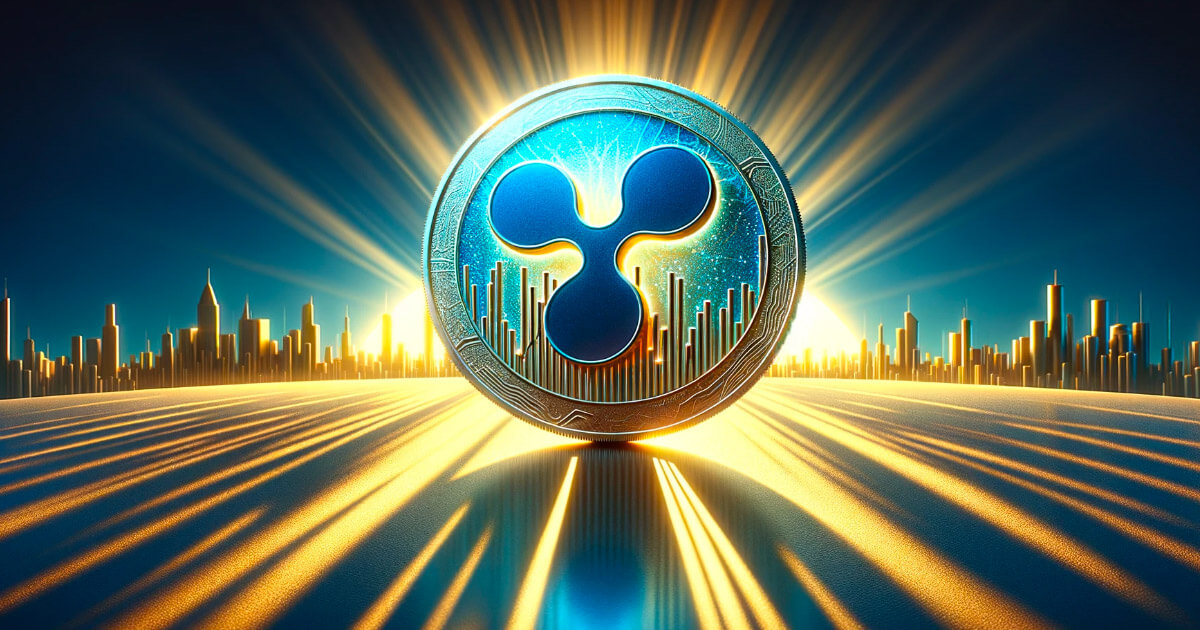Ripple price could skyrocket XRP ETF optimism was revived by Bitwise Asset Management’s filing in Delaware. If approved, this will be the first XRP ETF for the United States market. Investors now speculate how this development could impact XRP price in the future. The approval of such an ETF would impact the price of XRP massively, especially if it attracts inflows similar to Bitcoin’s $47 billion.
If XRP ETF Approved, Ripple Price Could Skyrocket
If an XRP ETF is approved, the price of XRP could explode. However, to understand how high it would go, we have to study how BTC and ETH reacted to the approval of their ETFs.
- Bitcoin Reaction: When the spot Bitcoin ETF was approved on January 10, 2024, the market saw a massive influx of capital, exceeding $1.6 billion just minutes into the launch.


The surge in demand boosted the BTC price by 39% over the following months, and they are currently hovering around $61,500.
- Ethereum Reaction: The approval of the Ethereum ETF in June 2024 led to investor interest and substantial inflows. While the ETH ETF initially saw some inflows, the outflows have generally become significant, and the Ethereum price dropped. Since the launch, the price of Ethereum has not surpassed the high of $3,521. Instead, the asset has lost 30% of its value and is trading at $2,478 today.


Ethereum’s lacklustre performance post-ETF could be attributed to a lack of volatility following uncertainty in the global markets, which led to investors preferring Bitcoin as a hedge against inflation.
- Potential Ripple Price Reaction: If an XRP ETF were to receive approval, we could expect an either/or situation, drawing from Bitcoin and Ethereum’s performance.


Given the current XRP market cap of $34 billion, a $47 billion inflow would push the Ripple price up moderately by 150%, with a potential extension to 300%. These scenarios could push the XRP price to $1.5 and $2.49, respectively.
Why XRP ETF is Different Than BTC or ETH ETF
An XRP ETF, if ever approved, will not be the same as BTC and ETH. Unlike the latter, the former doesn’t have to face the same downside pressure from Grayscale outflows, noted Sistine Research on X.
XRP has 1/9 the market cap of ETH and 1/35 that of BTC.
Even a few billion in ETF flows would likely have a large impact on price.
And it would have no Grayscale outflows to fight. pic.twitter.com/rvZAVXJMeF
— Sistine Research (@sistineresearch) October 1, 2024
This unique aspect would make XRP ETFs more attractive to investors. Despite their performance today, Bitcoin and Ethereum ETFs recorded huge inflows during their first trading day. ETH ETF registered $107.8 million, while Bitcoin recorded $4.5 billion. Nevertheless, both the ETFs experienced outflows Grayscale despite the positive volume.
Since XRP does not have the same Grayscale outflow pressure, its price could experience a more sustained increase.
Conclusion
The approval of an XRP ETF may have become possible after Bitwise Asset Management filed for an ETF with Delaware authorities. The ETF would be different from BTC and ETH, performing better due to the lack of outflow pressure from Grayscale. The Ripple price could surge to $1.5 or higher.
Frequently Asked Questions (FAQs)
An XRP ETF approval would mark the first XRP-based exchange-traded fund in the U.S. market, allowing institutional investors to easily gain exposure to XRP. It could lead to massive inflows of capital, similar to the impact seen with Bitcoin and Ethereum ETFs.
XRP differs from Bitcoin and Ethereum in that it does not face the same downside pressure from Grayscale outflows, making it potentially more attractive to investors. While Bitcoin and Ethereum ETFs saw large inflows initially, they later faced outflows due to Grayscale pressure, which XRP could avoid.
Projections suggest XRP could rise to between $1.50 and $2.49, depending on the size of the inflows following the approval of an ETF.
Related Articles
Disclaimer: The presented content may include the personal opinion of the author and is subject to market condition. Do your market research before investing in cryptocurrencies. The author or the publication does not hold any responsibility for your personal financial loss.

Leave a Reply